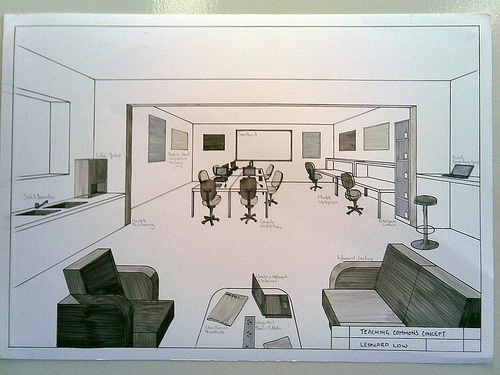As designers, we are infatuated with well designed stuff, whatever medium; web, product, signage, marketing material. When we find stuff that is well designed, we have a moment of "I wish I designed that" and then we want to tell our friends and fellow designers — and now our Twitter followers — about it. It makes us feel less greedy, but also gratified since we found it first.
The web makes it a lot easier for us to share our infatuation of stuff that we like. From gorgeously crafted furniture, pictures of our weekend festivities to articles that spark a chord with us. Sharing stuff is contagious. Most of the stuff that the web enables us to share is digital, in bytes not atoms. The nature of the web prevents us from sharing tangible things that we can hold in our hands. But why? The web is the best enabler to sharing stuff that reside in 0’s and 1’s, but not in molecules.
Sharing stuff has always been really gratifying to us. Think about how cool you felt when you sat in a circle on the rug of your kindergarten class, and told all of your classmates about the cool new toy that you got. You have that moment of "all the other kids are jealous" while you soak in your new cool status. But what you forgot is that by agreeing to share in sharing circle you also need to share that toy with your classmates. Really, what you want to do is go run to your knapsack and put the toy away before anyone can get their hands on it.
Why is it that we are so inclined to share ideas, articles, thoughts and intangible things, but when it comes to sharing tangible stuff we hold back?
I’d argue that a lot of it has to do with trust. We don’t trust other people with our stuff. We worry that they’ll break it, steal it or return it a different condition than when we lent it. I also wonder if we don’t trust the quality and durability of our stuff. Most stuff that we own we buy for ourselves and trust that we will take care of our own stuff. Think about that gps, lawnmower, high end purse. We get attached to our investments and only trust ourselves using them.
But what if stuff was actually designed to be shared?
Think about the auto companies that are designing cars specifically for sharing. We see the growth of car sharing companies like Zipcar and iGo. Car companies realized that to do, cars have been mostly designed for personal ownership. But what ZipCar has demonstrated is that people see a real value in sharing cars. So companies like Toyota are now designing cars that have fabric embedded with odor eliminating technology so you don’t smell that dog or Italian food that the driver before you had in the car.
How would things like tools, appliances or electronics or need to be reframed and then redesigned to enable sharing?
If we feel so good about helping others and sharing what we have, we can surely leverage design and design thinking to enable and catalyze the sharing of stuff and make it just as simple and gratifying as sharing an article with a friend.










